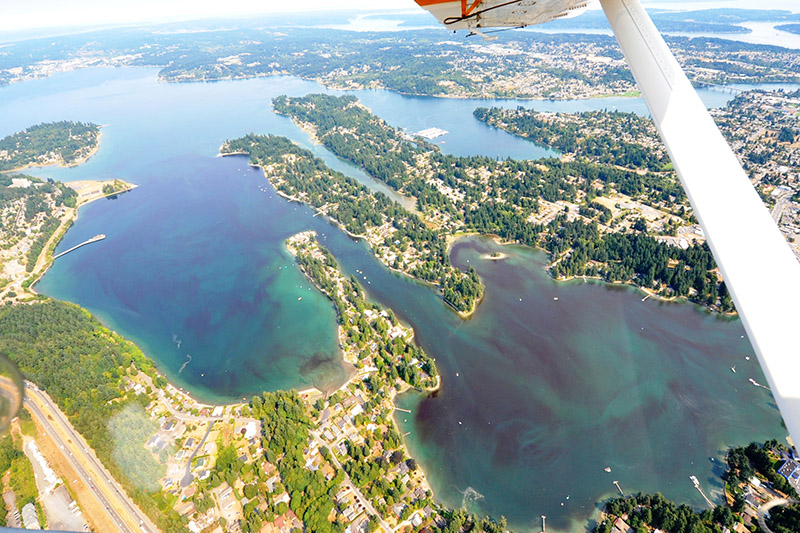Saltwater
We work to improve water quality in Washington's marine environments. Our scientists study marine water, sediments, and the creatures that live there, observing and reporting on changing conditions. We keep people safe by studying saltwater-coastline stability and monitoring harmful bacteria that can make swimmers sick. By testing water, sediment, and fish tissue for toxic contaminants we can learn how these substances enter the water, and how they effect the environment.
I want to...
Saltwater swimming safety
The Washington state BEACH Program samples saltwater swimming beaches for bacterial contamination from Memorial Day to Labor Day. When bacteria levels are too high, we will issue warnings to swimmers so they can avoid getting sick. Check our Coastal Atlas to see where it is safe to swim.
Monitoring and assessment of marine waters, sediment, and the coast
- Puget Sound & marine monitoring contains information about our long-term sediment and water quality monitoring program. We have also collected valuable data that the public and researchers can use.
- Salish Sea Model is a computer model of changing conditions in the greater Puget Sound/ Strait of San Juan de Fuca.
- The Coastal zone mapping & erosion monitoring program, called CMAP, studies shorelines such as bluffs and beaches. Our CMAP active projects page lists our current studies.
- Padilla Bay Reserve conducts estuarine research and offers educational opportunities.
- Toxic chemicals in Puget Sound describes the latest toxics loading assessments and follow-up studies.
Our Coastal Atlas
- Shoreline photos from several different years can show how land and water use is changing.
- Coastal Atlas map application connects to data on our saltwater shorelines, as well as offering layers on ocean resources, jurisdictions, regulated waters, surface cover, and more.
- Find Swimming Beach Closures shows advisories and closures of some public beaches due to bacterial contamination.
What do you see in the sea?
Pollution spills often appear as a sheen on the water. Report an environmental problem if you suspect a spill or other contamination.
Naturally occurring phenomena may look like pollution. "Smacks" or large Jellyfish masses usually look white in the water, while marine algae and/or plankton can be red, orange, or green.
Puget Sound and the Salish Sea
- Our Puget Sound page discusses the issues and problems Puget Sound faces and what we are doing to help.
- Eyes Over Puget Sound shows the surface conditions of Puget Sound with a new publication every month. Fly with us to learn the latest.
- Our Critter of the Month blog teaches about the benthic invertebrates that live at the bottom of the sound.
- Puget Sound Nutrient Watch is a blog series that discusses oxygen depletion problems in Puget Sound.


